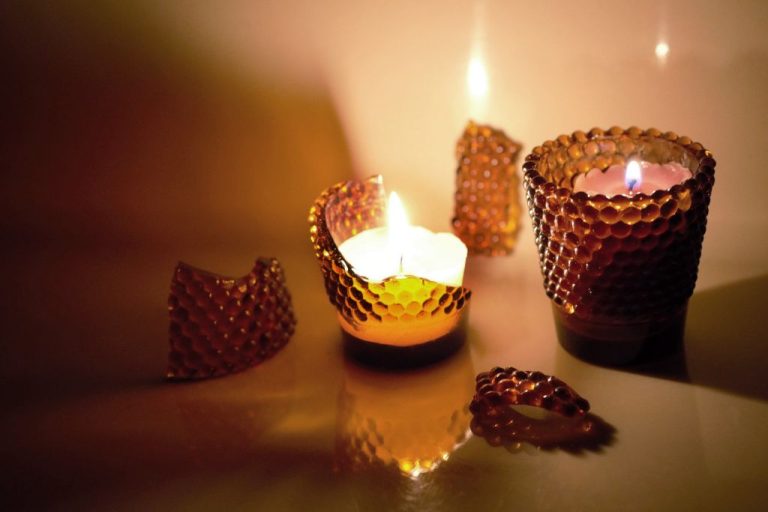Are Soy Candles Safe For Your Health?
Introduction
Soy candles have become increasingly popular in recent years as an alternative to traditional paraffin wax candles. Made from soybean oil instead of petroleum-based paraffin wax, soy candles are marketed as a natural, renewable resource that is better for the environment. The soybean oil is extracted and hydrogenated to produce soy wax, which has a lower melting point than paraffin, allowing soy candles to burn cooler and with less soot. With growing consumer interest in eco-friendly and non-toxic products, many prefer soy wax because it is made from a vegetable source rather than a petrochemical. Soy candles now account for a significant portion of candle sales, available from major retailers as well as small candle makers. But there are also questions around whether the chemicals used to process the soybean oil may affect indoor air quality and pose risks from emissions. This article will examine the debate around the safety and health impacts of burning soy wax candles.
How Soy Candles Are Made
Soy wax candles begin with soybean oil. The raw soybean oil goes through a process called hydrogenation, which converts the oil from a liquid to a solid wax. Hydrogenation involves adding hydrogen atoms to the oil molecules, changing their chemical structure. This hardens the oil into a wax with a melting point suitable for candle making.
The hydrogenated soy oil, known as soy wax, consists mainly of triglycerides. Other ingredients may be added as well, including fragrance oils, coloring agents, and supplements to modify the burn properties. Common additives include paraffin wax, vybar, and stearic acid.
To produce soy candles, the wax is first melted and mixed with the desired supplements and fragrances. Wicks are inserted into molds which are then filled with the melted wax mixture. Once cooled and hardened, the finished candles are removed from the molds and packaged.
Soy wax production involves large industrial equipment for the hydrogenation process. But candle makers can also produce soy candles on a small scale at home. With some soy wax flakes, candle dye and fragrance, wicks, and jars, hobbyists can handcraft soy candles relatively easily.
Benefits of Soy Candles
Soy candles have many benefits compared to traditional paraffin wax candles. Soy wax is made from soybean oil, a renewable and biodegradable resource, making soy candles more eco-friendly and sustainable (1). The natural soy wax produces very little soot because it has a lower burning temperature than paraffin wax (2). Less soot means less mess from black residue around the home. The cleaner burn of soy also reduces air pollutants released into your home.
The natural materials in soy candles also create less smoke. With paraffin candles, the petroleum byproducts release more fumes, but soy wax comes from plants so it does not produce toxic emissions (1). This makes soy candles a healthier choice for homes with children or pets who are lower to the ground and nearer to the candle’s emissions.
Overall, soy candles burn cleaner than paraffin with less soot, smoke and fumes, providing environmental and health advantages.
Sources:
(1) https://www.waxpoeticcandlebar.com/blog/why-soy-wax
(2) https://selfmadecandle.com/blogs/candles/benefits-of-soy-wax-candles-and-why-they-should-be-your-go-to-choice
Potential Health Concerns
While soy candles are often marketed as a natural, healthy alternative to paraffin candles, some health concerns have been raised regarding their use. The main concerns are the release of volatile organic compounds (VOCs) when burning soy candles, and the potential presence of lead in the wicks.
All types of candles release VOCs when burned, which can react with nitrogen oxides to produce formaldehyde and other irritants [1]. One study found scented soy candles produced significant levels of benzene and toluene VOCs [2]. Exposure to VOCs may cause nose, throat and lung irritation, headaches, loss of coordination, and damage the liver, kidneys and central nervous system. Those with asthma or chemical sensitivities may be particularly affected.
Soy candle wicks may also contain small amounts of lead to help the wick stay rigid and stand up as the candle burns. Lead exposure can cause neurological damage and other health effects. However, lead-core wicks have been banned in the US since 2003 [2]. Reputable soy candle brands use lead-free cotton or paper wicks.
Tips for Safe Soy Candle Use
To safely enjoy soy candles, it’s important to follow some basic care and usage guidelines. According to Night Sky Candle, one key tip is to keep the wick trimmed to 1⁄4 inch before lighting to prevent smoking and too high of a flame. They recommend using wick trimmers specifically designed for soy candles. Properly trimming the wick helps ensure an even melt pool and reduces soot.
Another important safety tip from IMOLE Candles is to allow the melt pool to fully extend to the edges before extinguishing the candle. This prevents tunneling where the center melts faster than the edges. Allowing the melt pool to reach the edges provides an even burn and maximizes how long the candle will last.
In addition, avoid burning soy candles for prolonged periods. According to Unplug Soy Candles, burn times over 3-4 hours can start to produce more soot. Take breaks between burns by blowing out the candle and allowing it to fully solidify before relighting. This allows the fragrance to reset for a stronger scent throw on the next burn.
Always burn soy candles in a well-ventilated room and keep away from drafts to prevent uneven burning. Following these simple tips will provide the safest and most enjoyable experience with soy candles.
Studies on Soy Candle Safety
Several scientific studies have analyzed the emissions from burning soy candles to determine if they pose any health risks. A 2021 article in the New York Times summarized the research, stating that using scented candles is generally considered safe, though they do release vapors and particles into the air when burned (https://www.nytimes.com/2021/11/09/well/scented-candles-health.html).
One key study published in the National Library of Medicine in 2023 looked at exposure to scented candles and associated health effects (https://www.ncbi.nlm.nih.gov/pmc/articles/PMC9832800/). The researchers found that compounds like phthalates emitted from candles can exacerbate allergic symptoms and asthma when inhaled. However, they concluded that occasional or short-term candle burning likely poses little risk.
Overall, research suggests soy candles are reasonably safe if used in moderation, with adequate ventilation, and avoiding excessive inhalation of vapors. Those with respiratory conditions like asthma may need to take extra precautions. More studies are still needed on long-term health impacts.
Regulations and Testing
In the United States, candle manufacturers are required to adhere to candle safety standards set by ASTM International, a global standards organization. The main standard that applies to soy candles is ASTM F2326 – Standard Specification for Manufacturer, Performance, and Testing Requirements for Candles.
This standard specifies requirements for candle performance, labeling, testing, and manufacturer quality control systems (Compliance Gate). Key requirements include:
- Candles must self-extinguish if tipped over, with wick trimming not exceeding 1/4 inches.
- Candles must not exhibit excessive flame height or production of excessive soot.
- Candles must be tested and labeled for total burn time.
- Manufacturing facilities must establish quality control procedures.
Many manufacturers also voluntarily submit their soy candles for independent safety testing at labs like Intertek. This testing analyzes burning rate, flame height, ignition time, total burn time, and other metrics. Passing these third-party tests provides added assurance to consumers about soy candle safety (Intertek).
Comparisons to Paraffin Candles
Paraffin wax, derived from petroleum, is commonly used in candle making. However, paraffin wax raises some health concerns when burned. According to [Soy Wax Candle vs Paraffin Candle, What’s the Difference?](https://simplenesscollection.com/en-us/blogs/news/soy-wax-candle-vs-paraffin-candle-whats-the-difference), paraffin candles produce toxins like acetone, benzene, toluene, and ketones when burned. These toxins can cause issues like asthma and allergies. Paraffin soot can also discolor walls and surfaces.
In contrast, soy wax comes from a renewable resource and does not produce toxic chemicals when burned, according to [Soy Wax vs. Paraffin Wax](https://lonestarcandlesupply.com/soy-vs-paraffin/). The natural soy wax only releases small amounts of water vapor and tiny amounts of CO2 when burned. This makes soy candles a safer option compared to paraffin candles.
Alternative Natural Candle Options
There are a few popular natural wax alternatives to soy that provide similar benefits without the potential health risks:
Eco-Friendly Candle Alternatives
Beeswax – Beeswax is secreted by honey bees to create the walls of their honeycombs. It is made entirely from natural ingredients and emits a subtle honey aroma when burned. Beeswax candles burn longer and cleaner than many other waxes.
Coconut Wax – Coconut wax comes from the oil of coconut palms. It is an environmentally friendly, natural alternative that burns slowly and cleanly. Coconut wax candles give off a light, tropical fragrance.
Palm Wax – Palm wax is harvested from palm trees and has become a popular substitute for paraffin wax. Its natural origin makes it biodegradable and renewable. Palm wax burns slowly and emits a faint botanical scent.
These natural waxes allow candle makers to avoid petroleum-based paraffin wax while also avoiding potential soybean-related health risks. They provide an excellent eco-friendly alternative for scenting and lighting homes.
Conclusions
After reviewing the available research, there is no strong evidence showing soy candles pose any major health risks when used normally and properly. While some people may be sensitive to soy and experience allergy-like symptoms, soy candles do not appear to release harmful toxins in significant amounts. Compared to paraffin wax candles, soy candles are likely a healthier choice overall.
For most consumers, soy candles represent a safe option you can enjoy with little concern. However, those with soy allergies or asthma may want to be cautious or avoid prolonged exposure. It’s also wise to follow proper safety tips such as keeping wicks trimmed, avoiding drafts, and not burning candles for more than 4 hours at once. Ultimately soy candles, like any candle, produce some emissions so ventilation is key.
If you remain concerned about soy and want a natural alternative, beeswax or vegetable wax candles are non-toxic and clean burning options. But for most people, soy wax candles pose minimal risk when used properly and make an eco-friendly choice over paraffin.



